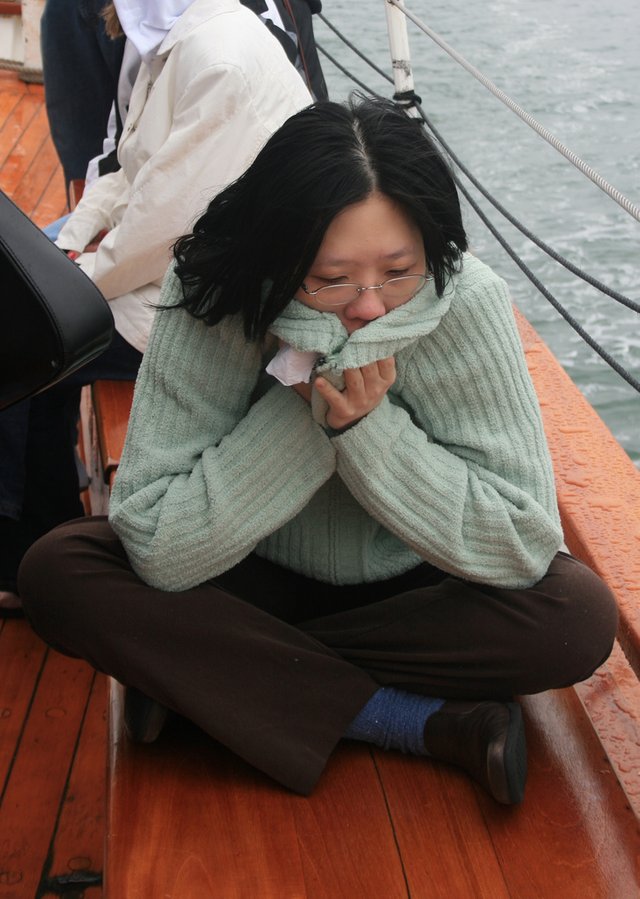Why some people have travel sickness? And is there any way to prevent it?
Motion sickness is a common condition and depending on the cause, it can also be called seasickness, car sickness or airsickness.

If you have ever experienced it, you probably know the feeling.Motion sickness manifests generally with Nausea followed by vomiting, anorexia, fatigue, and dizziness.This condition isn't serious but it can be very disturbing to people who want to travel and have fun including myself.
A fully adequate theory of motion sickness is not available.Two popular theories were described, the evolutionary and the ecological.
The most satisfying explanation is a sensory conflict between different interconnected systems.
Neuroscientists Gary E. Riccio and Thomas A. Stoffregenthere believe that there are 3 systems implicated in this sensory conflict.
The visual system

The vestibular system
This is a system located in the inner ear and provides balance and spatial orientation for the purpose of coordinating movement and maintaining posture.Every movement we make has two compounds, a linear and a circular.Therefore the vestibular system has two components: the three semicircular canals, which indicate rotational movements, and the otoliths, which indicate linear movements. These information are transferred to the brain through the vestibular nerve.


Somatosensory system
This is a complex part of the overall nervous system.It contains all the afferent fibers that can transmit efficient information about the state of the body whether its balance, pain, heat etcc..Differents receptors are responsible for these sensations including thermoreceptors for heat detection, nociceptors for pain, mechanoreceptors for the position of the body, chemoreceptors.They are found all over the body including the skin, epithelial tissues, muscles, bones and joints, internal organs, and the cardiovascular system.When stimulated a signal is transferred to the various area of the brain through fibers of the dorsal spinal cord and paint a map of different body parts in the brain (somatotopy).
Proprioception is the sense of position and movement and it`s the main system responsible for the sensory conflict.
These systems work in harmony to give you the exact perception of position and movement.When a system senses something different from what other systems experience, the conflict arises and the symptoms occur.For example, when you are sitting in the car, your eyes see things moving but your body is somehow stable.That`s why patients won't experience these symptoms when they are driving the car instead.
The ecological theory suggests that as we survived millions of years, we have learned to vomit in order to get rid of ingested neurotoxins.Thus its occurrence in response to the motion would be an accidental by-product of the sensory conflict system.the main hypothesis is that animals become sick in situations in which they do not possess (or learned) strategies that are effective for the maintenance of postural stability and in these situations intoxications are the most suspected cause for instability.A research done in 2010 found that postural instability has a direct link with motion sickness and called it a dynamical disease.
Sleep deprivation increases susceptibility to developing motion sickness alongside with other factors such as intense movement, a bumpy car ride, full stomach, anxiety, excitement, strong smells, fatigue or even the fact that you expect motion sickness.On the other hand, traveling frequently and getting older decrease susceptibility to develop motion sickness over time.
Preventing a traveler from experiencing sensory conflict is the key to avoid motion sickness.First, patients should learn to identify situations that will lead to motion sickness.Second, they should try to minimize the amount of unpleasant motion they are exposed to either by avoiding uncomfortable conditions while traveling or by positioning themselves in the most stable part of the car.
Other good strategies include watching something stable like the visual horizon, keeping your sight in the vehicle, tilting their head, or lying down and closing the eyes.
As for medications, Scopolamine is the most effective for preventing motion sickness followed by antihistamines such as Diphenhydramine.These medications should be consumed approximately 1 hour before traveling.
References :
https://www.ncbi.nlm.nih.gov/pubmed/24961738
https://www.webmd.com/cold-and-flu/ear-infection/tc/motion-sickness-topic-overview#1
http://science.sciencemag.org/content/197/4302/493
https://www.ncbi.nlm.nih.gov/pubmed/25077501
http://www.tandfonline.com/doi/abs/10.1207/s15326969eco0303_2
Picture Credit:
Thumbnail - flickr.com
All the rest- wikimedia.org
One more thing, Join the #steemSTEM channel, A community project to promote science technology engineering and mathematics postings on Steemit.
